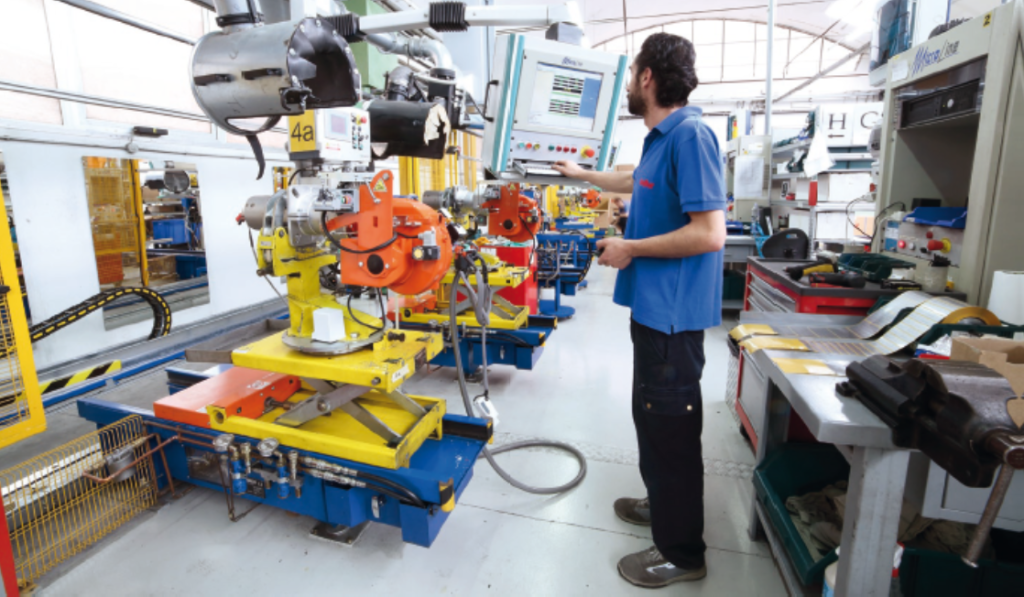Interview with Francesco Sena, Director of Operations
Since 1950, Baltur has been a brand of excellence in combustion technologies. Over 70 years, it has achieved the perfect balance between performance and savings, comfort and sustainability. Thanks to continuous investment in research and innovation, today it is able to satisfy both industry and the private sector through a complete range of burners, with very high modulation ratios and low polluting emissions, produced for residential comfort and air conditioning.
Baltur operates according to the principles of Lean Management and Industry 4.0, he told us about it Francesco Sena, Director of Operations."It has already been a few years since, intrigued by this ferment around the technologies of the new industrial revolution, we began to document and discuss with various experts, in particular with Bonfiglioli Consulting, our partner on continuous improvement, to understand which digital technologies to apply to which processes, aware in each case that this is a new logic that affects the entire company transversally.
After an initial scouting activity that identified 3 areas of focus, we decided to focus on one of them, logistics, enhancing it with the help of digital technologies.
Every day Baltur produces an average of 160 burners, each of which has an average of 300 components, which means as many as 48,000 components to be picked up, assembled, and tracked daily: some for example may look identical while not being so, having different electronic boards or components inside that change their power and use. These components deemed critical generate about 11,000 items to be checked and verified with the utmost care every day. Although the error rate is quite small, between 0.1% and 0.15%, In the past 9 months we have measured and intercepted several errors, both in our internal process and in the external process. The costs arising from these factors (so-called non-quality costs) amounted to 90,000 euros in the first year alone, and I firmly believe that this is only the beginning.

The pilot project therefore focused on the process of subjugating line, that is, on those operations that the warehousemen perform every hour, to arrange on the carts all the components to assemble our burners. These are taken to special areas, which are located near the assembly lines.
Goal: To have only the right components on the line at the right time.
The entire process is currently supported by a robust information system. The warehouse worker today, picks up components using a mixed system, consisting of paper and bar code reader. Paper is convenient because it is lightweight, but it is not up-to-date, in the sense that even in the case where the picking documents are printed the same morning, it may happen that they change during the day (for example, some components may arrive later than the production schedule because they are undergoing quality verification). Therefore, it may happen that the operator is faced with a situation of non-alignment between the paper and what he can actually pick up.
The line digitization project, which we have named SmartKart, involves the on-boarding of specific carts with a tablet interfaced in real time with the company's management system. In this way, when the warehouse operator, whom we call the 'kittator', prepares the components of the burner assembly bill of materials, in addition to visual and bar code verification, he will have with the tablet the possibility of seeing exclusive images and specific information of the component to be picked up to be compared later with his radio terminal, to be mathematically certain that he has picked up the right one.All this system will then be linked to the in-line manufacturing process. Today, the line conductors have no way of monitoring the readiness of the carts in advance-that is why we have already provided for A second step involving the creation of an internal information structure where each cart will have a departure time and an arrival time (very similar to scoreboards at airports or train stations). The trolley area will then be equipped with a fixed monitor where it will be indicated which SmartKart to pick up to bring to the line, or which Smarkart is free to use.
The third phase of the project then requires that the operator assembling the component will also have an additional tablet at his workstation that will tell him exactly what part number to pick up and show him an image of it to ensure that it is the right one.
What does this entail? It entails that in the event that a customer reports an anomaly or malfunction of a burner, Baltur will have the mapping of the entire logistics and manufacturing process that will allow it to take the most appropriate corrective actions in a timely manner. With this in mind, Industry 4.0 technologies I believe are a valuable ally to simplify and continue the process of 'Continuous Improvement' and increasingly guarantee the market a product of excellence that distinguishes us among the best players in the industry."